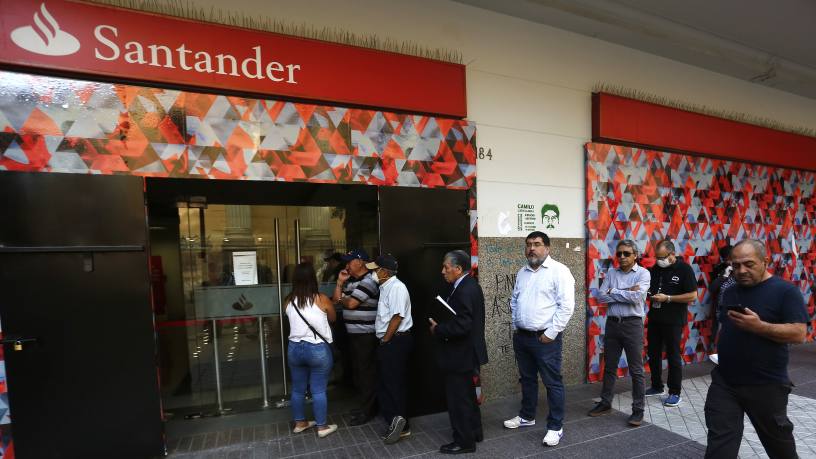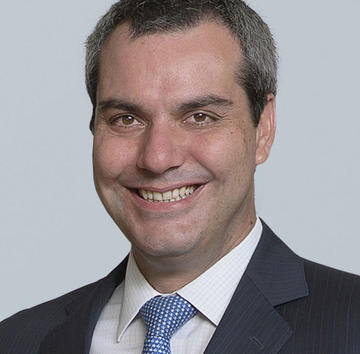Chile’s banks have weathered the dual blows of its political crisis and the Covid-19 pandemic over the past two years and, while extremely cautious, are now ready for growth.
The 14 full-service banks in the Association of Banks and Financial Institutions (ABIF) are liquid and seeing growing expansion, following the challenges brought on by a mass uprising in October 2019 and the 2020 coronavirus lockdown that is still unwinding.
“The Chilean banking system was prepared for the crisis,” says Felipe Carvallo, vice-president and senior analyst at Moody’s Investors Service. “[The banks] worked very well to provide support to individuals and enterprises. They were able to generate provisions, while at the same time still report positive numbers.”
According to ABIF general manager Luis Opazo, the impact that banks had during the pandemic should not be understated. “Banks played a total countercyclical role. During the height of the pandemic, when the economy contracted by 6.3% in September 2020, loans to small and medium-sized enterprises (SMEs) increased by 8.1%,” he says.
Profitability, while better, continues to be low in international terms
Banks also undertook a mass restructuring of credit, with more than 1.3 million consumer, commercial and mortgage loans restructured. And the concerted effort is paying off.
Past-due loans of 90 days stood at 1.44% of total loans in August 2021 — the lowest since the pandemic. Loans to individuals and companies are gaining traction, and mortgages were up 6.7% in August compared to a year earlier. Return on average equity has recuperated, reaching 13.45% in August compared to 6.23% the same month in 2020. Assets under management in the system reached $440bn — 1.3 times the country’s gross domestic product (GDP) — according to the ABIF.
“Banks proved to be resilient, not only in their operations, but also in their use of capital and their bottom line,” says Mr Opazo.
While conditions have improved, banks remain skittish. Like all other sectors in the economy, they are waiting for signs of the country’s political and economic direction as presidential elections approach. In addition, the Constituent Assembly is drafting a new constitution, which should be voted on in 2022.
“The banks will continue to be wary about what may happen, but the framework in Chile is strong enough to absorb shocks,” says Mr Carvallo.
Turbulent times
Chile’s banks have been faced with a changing political and operating environment since the 2019 protests over economic conditions in the country. It had not yet recovered when the pandemic began.
The country’s political parties responded to the upheaval by agreeing to a series of changes, the most important of which was holding a plebiscite in October 2020 that let Chileans decide whether they wanted to replace the 1980 constitution. Nearly 80% of votes were cast in favour of changing the constitution and Chileans elected 155 delegates to a Constituent Assembly in May 2021.
The Constituent Assembly, unlike similar processes in South America, did not replace Congress, but is working in parallel to draft the new constitution. The body was given nine months to finish its work; while it can tag on three additional months, if need be, it must complete its work by May 2022.
A few basic concepts were approved right away, including two that are key to the banking sector. Assembly members agreed that the Central Reserve Bank would remain autonomous and that they would not tamper with any international and bilateral agreements signed by the Chilean state. Chile is Latin America’s most open economy, with free-trade agreements in place with all major economies and blocs.
However, everything else is fair game. Banks are not only watching the Constituent Assembly, but also the current Congress that will serve until new lawmakers take their seats in March 2022. The most recent thorny issue was proposed by outgoing president Sebastián Piñera’s administration as part of its pension reform plan. Mr Piñera, elected in 2018, cannot stand for a consecutive term this year.
His government submitted legislation in September that includes reinstating a capital gains tax after 20 years, as well as creating other taxes, including on inheritances. The administration had previously taken a stand against a move by opposition parties in Congress to create wealth taxes, with Congress eventually rejecting it. The new taxes proposed by Mr Piñera would be used to offset around $1.2bn in new spending needed to increase a basic pension for senior citizens to around $215/month.
Congress is also debating whether it will allow Chileans to make a fourth withdrawal from their private pension funds (AFPs) since the start of the pandemic. The withdrawals, each time allowing contributors to withdraw up to 10% of their fund, are a primary reason for high liquidity in the market.
The possibility of a fourth withdrawal, however, has generated strong criticism. Goldman Sachs warned in early October that the fourth withdrawal was an unjustified stimulus that could upend financial stability and add to inflation, which is already running above 5% and is the highest in more than a decade.
The last major change was in 2014, when maximum rates on lending were established. The predicted gloom and doom scenarios did not follow, and might have actually helped banks by moving them away from riskier assets. It is one of the reasons asset quality in the system has not deteriorated in the pandemic — a testament to the system’s strength and its capacity to manage the state programmes.
Reputational strength
A key issue for the banking sector is guaranteeing its reputation as changes are debated in Congress and the Constituent Assembly. Banks managed to largely avoid the wave of anger that swept over the AFPs and insurance companies after the social protests two years ago. “People do not feel cheated by their banks the way they felt cheated by their pension fund or insurance provider,” says Mr Carvallo.
Luis Serrano, director of the School of Public Administration at Chile’s Universidad San Sebastián, agrees with Mr Carvallo that the banks largely escaped the public’s anger that swelled with the protests. “Banks are seen as something more private, without the public component of the pension funds. Banks are perceived differently, which is why the social discontent has not been as acute for them,” says Mr Serrano.
The ABIF wants to keep it this way. It has been swatting away Congress’s criticism that banks are flush with profits and something should be done to redress this — criticism that has only increased as the November presidential elections approach. The banking industry’s profits were $1.6bn in August 2020, jumping to $2.5bn the same month this year. The growth is impressive looked at alone, but not if the $440bn in assets are also considered.
Mr Opazo says that return on assets (ROA) fell to 0.38% in December 2020 — its lowest historic rate — and while it has improved this year, banks are well behind other sectors. The mining sector, which is a clear leader, had a 6.2% ROA in the first quarter of this year, while the banking sector’s ROA was only 0.85%.
“Profitability, while better, continues to be low in international terms. Chile ranked 39th in a sample of 53 countries with similar market economies in 2020, according to the Financial Stability Institute,” says Mr Opazo.
The banks point to reports from rating agencies that regularly cite the low profitability of Chilean banks compared to foreign peers. “Chilean bank profitability and capital metrics are quite low compared with other banking systems in Latam and similar emerging markets with a high private credit/GDP ratio, as tight corporate and mortgage loan margins weigh on banks’ returns,” Fitch Ratings stated at the start of 2021.
Mr Carvallo adds that the banks also have to contend with the broader environment, which includes the negative outlook Moody’s and other agencies have assigned to the sovereign.
“We have a negative outlook that will be resolved once we are comfortable that social demands are being met with more spending, but also with more income. I think we will have the negative outlook for a while,” he says.
Digital growth
While worried about taxes and potential controls, banks also recognise that the industry has changed dramatically with the Covid-19. Technological changes underway prior to the pandemic were quickly ramped up, while new products multiplied throughout the banking ecosystem.
“Chilean banks began adopting a highly digitalised model several years ago and the pandemic accelerated the changes that were being made by the banks and how customers used them. Electronic transfers grew by 30% monthly, for example. The pandemic reduced the use of cash and increased the use of credit cards,” says Mr Opazo.
[Banco Santander Chile] is the bank with the largest proportion of digital clients with respect to total clients since the pandemic
Banco Santander Chile, the country’s leading bank, saw its market participation increase further with new products. The lender had total assets of $78.3bn at the end of 2020. Net loans were $46.9bn, while deposits were $35.3bn.
“The growth of our digital products has been explosive, with digital clients increasing 39% to 1.9 million [between June 2020 and June 2021]. We are the bank with the largest proportion of digital clients with respect to total clients since the pandemic, and our goal is to stay in the lead,” says Emiliano Muratore, chief financial officer at Santander Chile.
The bank’s star product has been Santander Life, a basic account developed for people opening their first account. It grew 238% in the 12 months through June 2021 to 729,561 clients. Similarly, Superdigital, a prepaid digital product for the unbanked, expanded by 158% to 182,096 clients. It also launched Getnet, a merchant payments platform, in March 2021. The goal was 20,000 points of sale this year; impressively, it reached 40,000 by September and is still climbing. The hook for vendors is that Getnet allows clients to receive money from their sales in a Santander account multiple times per day, instead of having to wait 24–72 hours.
Fintech disruption
Mr Carvallo says that one of the differences between Chile and other big markets in the region, like Brazil and Mexico, are regulations that make it harder for non-banks to compete against traditional banks. “Anything that is perceived as gathering deposits or any kind of savings can get you into a lot of trouble with regulators,” he says.
This has led to banks working with and incorporating fintechs into their structures. According to Mr Carvallo: “There is more in-house innovation than interruption from outside. Banks have been investing so they will not lose market share.”
This, too, could change in the near future. Congress is currently working through a fintech bill that would change how these businesses are regulated. Chile had 230 fintechs in September 2021, when the legislation was submitted to Congress. The number increased by 38% during the pandemic.
ABIF is also involved, trying to remain a step ahead. In August, a month before the fintech bill was submitted, ABIF and the Association of Fintech Companies of Chile announced an agreement for “open finance” in Chile.
“Fintechs are the competition, [but also] provide services to banks. We are interested in creating a space where we can collaborate in a regulatory framework that is symmetrical, proportional and neutral,” says Mr Opazo.
A new step in the digital ecosystem could come in early 2022, when the central bank will decide if it will create its own digital currency. Governor of the Central Bank of Chile, Mario Marcel, announced in late September that the bank had formed a working group to research options for a digital peso.
During his presentation to Congress, Mr Marcel said that digital payments had multiplied with the pandemic, with approximately 40% of Chilean households now using some kind of digital payment.
ESG factors
Developing alongside technological changes has been a concerted effort by the government and banks to strengthen environmental, social and governance (ESG) principles in the financial sector.
The Chilean government has played a big role. In July, the sovereign issued $5.8bn in a multi-tranche social bond that included paper in euros and dollars. It had placed a similar bond, for $4.25bn, in January 2021. Chile has been breaking ground with ESG bonds since its first green bond in 2019.
The government, banking association and regulators signed a ‘green agreement’, a voluntary commitment on climate change, in 2019. Mr Opazo says that banks had made major headway in two areas: adopting policies, mechanisms and internal processes that incorporate ESG principles; and incorporating ESG variables in risk analysis.
Mr Muratore says ESG variables are embedded in all of Santander Chile’s transactions. The bank entered new territory in February 2021, launching its first bond specifically for women. The three-year Women’s SME Bond (Bono Pyme Mujer) was for $50m, at a rate of 0.71%, and will be used to finance SMEs run by women.
“Santander will use this to contribute to strengthening and helping grow businesses that are operated by women. This debt instrument is in line with the bank’s overall ESG strategy,” says Mr Muratore.
Mr Opazo says Chile has always been at the forefront of change in the financial system in Latin America and is showing this again with ESG. He says the sector “considers ESG variables in all its decisions”.
Continue reading: New economic and political winds in Chile














